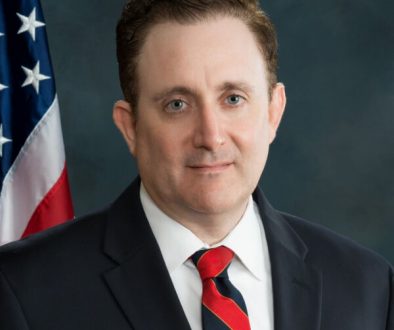Interview with Rebecca Ram
 Rebecca Ram trained as a research consultant and clinical data/project manager involved in Phase II-IV clinical trials. After obtaining a degree in physiology and pharmacology from the University of Hertfordshire in 1994 she went on to complete her Masters degree in Toxicology and Bioinformatics with distinction at the University of East London. Rebecca is currently a scientific research consultant.
Rebecca Ram trained as a research consultant and clinical data/project manager involved in Phase II-IV clinical trials. After obtaining a degree in physiology and pharmacology from the University of Hertfordshire in 1994 she went on to complete her Masters degree in Toxicology and Bioinformatics with distinction at the University of East London. Rebecca is currently a scientific research consultant.
Antidote Europe (AE): We feel very privileged to interview someone with your background. Could you describe for our readers how you initially came to choose a career in clinical trials?
Rebecca Ram (RR): Thank you for asking me to contribute. After I left university twenty years ago, I was very pleased to have a biology degree, but most of the career opportunities for life science graduates seemed to involve animal research. Despite still trying to find a career path, I knew I wanted to avoid any role which involved animal testing. After much searching, I found a pharmaceutical graduate position which involved assessing and validating patient data from clinical trials and my experience grew from there. I moved on to a more senior clinical data management role, working with different clinical research organisations (CROs) and on a number of studies,which was also very valuable experience, for example in examining patient data for new treatments in psychiatric disorders, diabetes and neurodegenerative disease.
AE: At what point in your studies or in your career did you begin to have doubts about the value of animal experiments with respect to human response to pharmaceutical drugs?
RR: My work in clinical trials (specifically clinical data management) allowed me to see human patient data in response to new drugs. I was also able to read some of the protocols which summarised how the treatments were previously given to animals during preclinical testing. Aside from my feelings about the suffering caused to the animals, it struck me more and more what a ‘tickbox’ system this seemed to be, in contrast to the directly relevant data obtained from patients and volunteers. In my work since then, it has been interesting to hear members of the chemicals and regulatory toxicology industry confirm the same. Furthermore, it became clear to me that when new treatments or therapies are successful in humans, it’s because they work as a result of just that- rigorously controlled study, carried out directly in humans and not ‘because’ they have been tested in animals. The vast use of animals in both toxicity testing and basic research by no means proves their validity in predicting a response in humans and having worked on studies where the treatments in question have since failed or been withdrawn from human use, I have seen evidence of this. Around this time, the Northwick Park disaster for the drug TGN1412 also occured.
AE: What are your views on the informed consent procedure for participants in clinical trials? Would you make a distinction between legal consent and valid consent?
RR: I think that informed consent is vital and one of many good aspects of medical research which have been developed as a result of previous tragedies in illegal human experimentation, for example the Tuskegee clinical trials abuses between the 1930’s-1970’s. I would definitely make a distinction between legal consent and valid or informed consent. For informed consent to have been given, a person must have the capacity and willingness to have all information on treatment and outcomes fully explained to them, in order to make an informed decision as to whether to participate.Legal consent (with regard to medical treatment in this context) is different in that in may still be granted on someone’s behalf where they are likely to benefit from the treatment and if they do not have the capacity to grant consent themselves. That said, I think every case of consent must be scrutinised individually, based on the individual (patient or volunteer) and their circumstances. With regard to valid consent, I do see another clear issue with presenting information to a patient before they agree to take a trial drug, since no amount of animal testing can reliably guarantee it’s safety, therefore providing further information on this to the patient would make consent as ‘informed’ as possible.
AE: Besides replacing animal testing, what else in your view needs to happen to make clinical trials safer and more effective?
RR: Well designed clinical research is vital as it captures how individual patients can respond to treatments so differently. Animal testing can never reflect this,when the species, conditions and artificially created environment in animals differ from the complexities of human disease development, for example in the study of neurodegenerative diseases, which are almost entirely unique to humans.
Aside from replacing animal testing, I think the field of pharmacogenomics, which studies individual genetic traits in response to drugs is fascinating and key to maximising the information obtained from clinical and epidemiological studies. On a personal level, I’m also fascinated by phase 0 (microdosing) trials and the potential that they continue to offer, which I think is largely untapped to date.
Toxicity testing and drug development has to change. It’s not just those who want to see an end to animal testing saying this- the scientific community knows it too and it’s good to see initiatives to replace animal testing being developed, but the regulatory bodies and competent authorities still need to get behind this on a mainstream level and fuel development with meaningful funding. 21st century toxicology which eliminates the use of animals (such as human ‘organ on a chip’ technologies) are receiving a lot of attention which is great news, yet alternatives to animals are still largely treated as the exception rather than the rule and that needs to change, for patients as well as animals.
Slowly,we are starting to see industry acknowledge this, which is where progress in toxicity could see the most change soon as the failing pipeline in new drugs needs urgently addressing. However, there is still a ‘Catch 22’ situation where industry is reluctant to develop new methods if there is a risk that regulators will not approve them. Similarly, regulators are so used to seeing animal test data, that they continue to prioritise it.
Aside from regulatory testing, sadly the largest use of animals still continues to increase in academic basic research, as well as vast numbers of GM (genetically modified) animals being bred in attempts to mimic the human condition, therefore developments in non-animal methods need to influence this area too, to see real progress.
AE: We take this opportunity to sincerely thank you for taking part in this interview. Are there any other comments that you would like to share with our readers that were not covered in the interview?
RR: I think it’s important to convey the big picture in animal research, which goes well beyond the ethical and scientific debates on both sides. It is a globalised industry of not only researchers, but suppliers, breeders and transporters of animals and many rely on it continuing.This reflects also on mainstream education through undergraduate and postgraduate study,which still heavily influences young researchers to use animals at least at some stage, if they wish to pursue a career in the life sciences.
As well as this, scientists are always under tremendous pressure to publish and the political and bureaucratic aspects of this must be taken into account. For example, use of particular animal species by researchers to increase likelihood of publication ( e.g. using rats or mice instead of fruit flies). Additionally as a scientist within any discipline, you are trained never to say simply that your research ‘didn’t work’. Instead you must say for example that equipment or test methods need amending or that further research is needed and so on. I think this reflects directly on animal research, in a (now widely acknowledged) flawed system that has been used for many decades and shown in many animal research publications. There is also a vast amount of unpublished animal research data.
I believe that initiatives in evidence based toxicology and adverse event pathway analysis are truly the way forward. I think it’s also very important to emphasise that not all animal testing requires alternatives, for example using animals to test industrial chemicals, in order to market new products. Despite how such testing is presented in terms of human safety and innovation, it is not a scientific argument, but simply animal suffering purely to meet business requirements.This type of testing could stop- today. We now have an established legislative model in the form of the cosmetics regulation, showing how imposing a schedule of realistic deadlines in ending animal testing results directly in development of scientifically validated, non-animal methods of toxicity testing, which are of use not only in the cosmetics sector but other industries too. This legislative model can and must be extended to other industries, alongside appropriate funding.




